Use these tactics
Let’s explore these tactics with an example: Pip’s Engineering Firm
The firm must address team demotivation by identifying issues and developing a plan to improve morale. See below how Pip’s Engineering Firm uses these tactics to solve their problem.
1
Use Sailboat to understand your goals
Use Sailboat to understand your goals
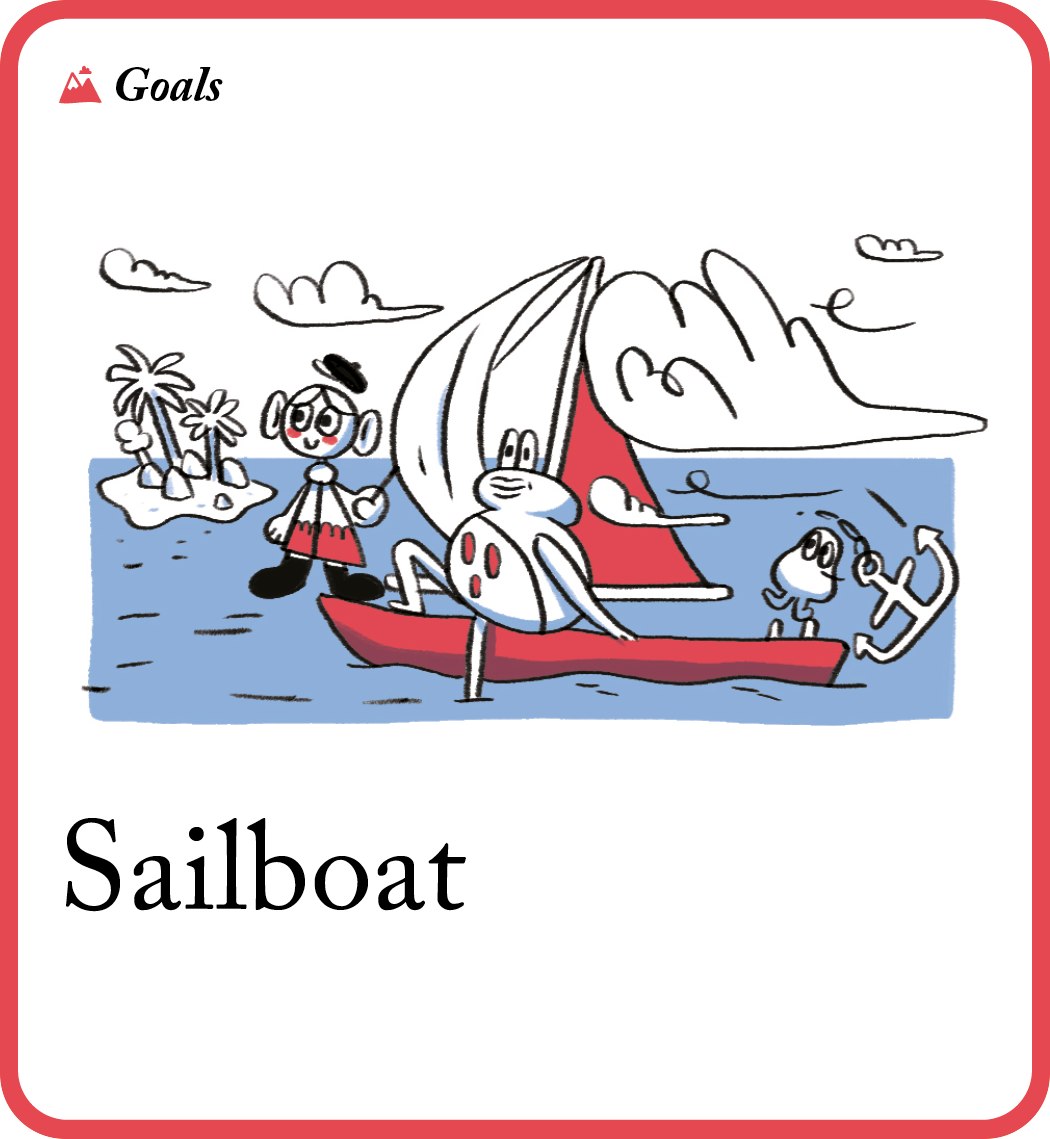
👥 Who is needed? Yourself and your team (optional: just you)
⏱️ How long is needed? 1 hour
🧠 What’s the goal? Get the team’s imagination flowing and set an aspirational vision to work towards.
👀 Why is this important? This tactic helps you find out what your goals really are, the reasons behind them and what’s stopping you from achieving them. This exercise brings together teams and stakeholders to gain a shared understanding of their goals, drivers and barriers. You can find out what is slowing you down, or if the purpose or goals are not quite right.
 Tip: make sure to talk about what a S.M.A.R.T. goal is: Specific, Measurable, Achievable, Relevant, and Time-Bound.
Tip: make sure to talk about what a S.M.A.R.T. goal is: Specific, Measurable, Achievable, Relevant, and Time-Bound.
Instructions
- Since this is the start of your overall workshop, make sure to start with an icebreaker to warm everyone up.
- Draw a boat to represent the team/project and an anchor to represent the barriers. (3 minute)
- Draw an island to represent the goal. Ask each participant to write down the team/project goals on sticky notes. (7 minutes)
- Share and Theme Sort them near the island. (10 minutes)
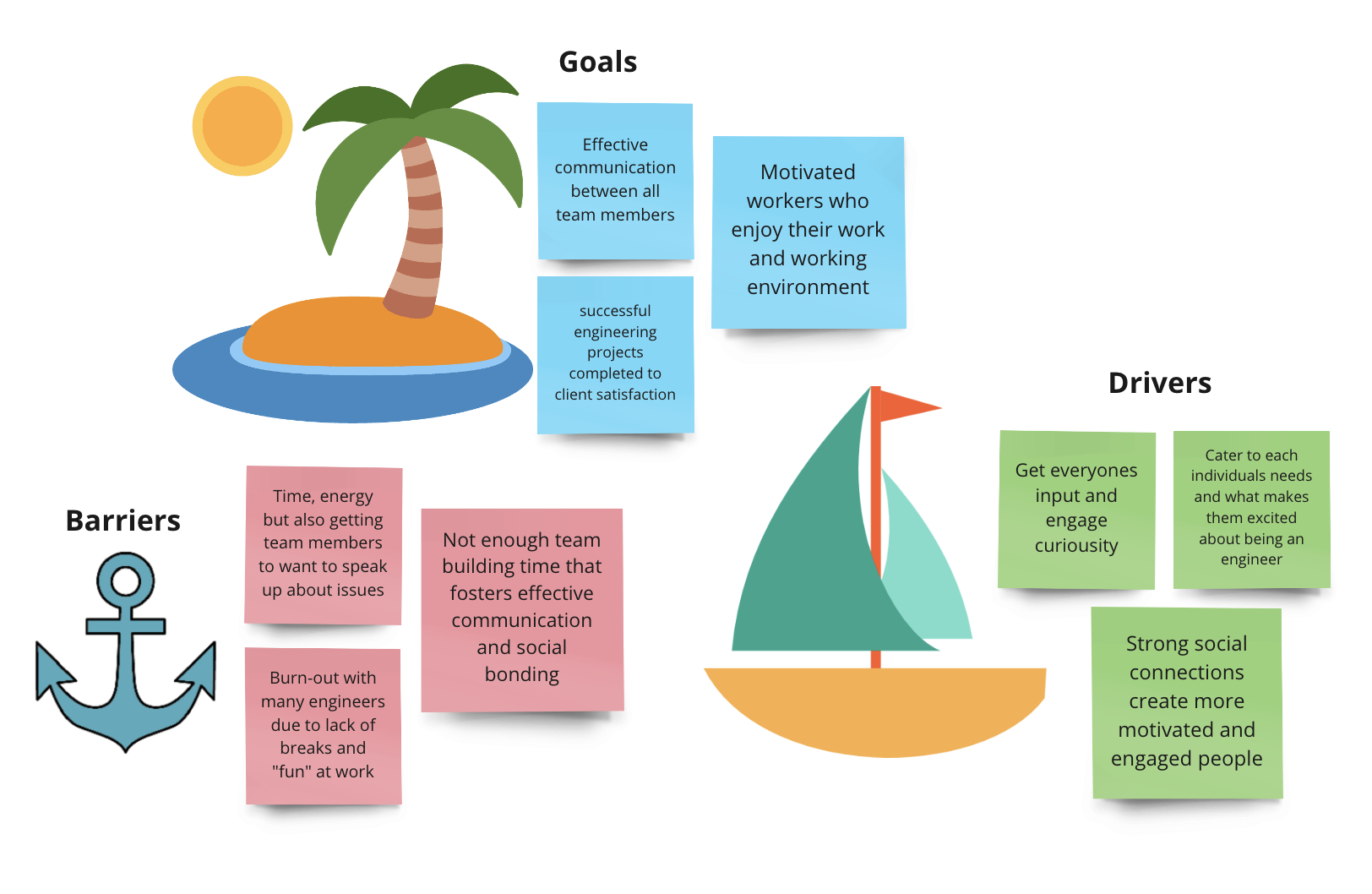
- Ask the group to write down the drivers towards the goal on sticky notes. (5 minutes)
- Share and Theme Sort them near the sailboat. (10 minutes)
- Write down the barriers (problems) to achieving the goals on sticky notes. (5 minutes)
- Share and Theme Sort them near the the anchor. (10 minutes)
- Secret Vote the goals to find out what the groups believes are the most important goals. (5 minutes)

-
Finally, Secret Vote the barriers to understand what the most important problem to solve is. (5 minutes)
⬇️ In the next tactic, use your aspirational vision to work towards getting to the root cause with Five Whys.
2
Use Five Whys to get to the root cause
Use Five Whys to get to the root cause
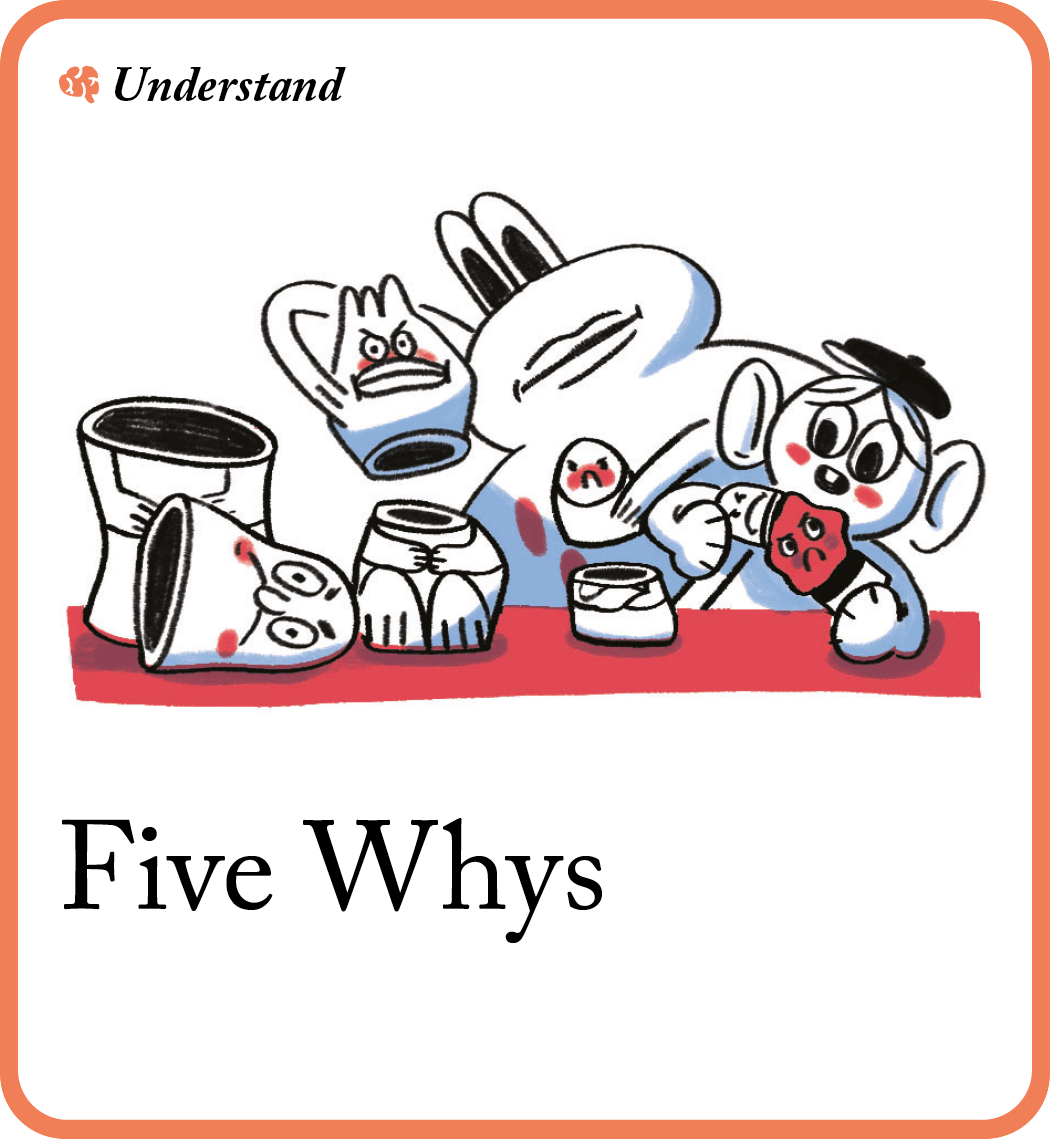
👥 Who is needed? Yourself and your team (optional: just you)
⏱️ How long is needed? 30 minutes – 1 hour
🧠 What’s the goal? Find out what is driving your team, and what may stop you achieving your vision.
👀 Why is this important? This tactic helps you get to the root cause of a problem affecting your project. This tactic channels your inner inquisitive toddler and asks “why?” five times to get to the heart of the issue. By identifying the root cause, you don’t waste time solving superficial problems.
 Tip: use your barriers from the step before with Sailboat.
Tip: use your barriers from the step before with Sailboat.
Instructions
- Invite key stakeholders to the workshop (use Stakeholder Map beforehand to help you invite the right people).
- Select a meeting leader to lead the discussion. (decide before the meeting)
- For each barrier in turn, ask “why?” five times. Include the previous answer in the question to keep a narrow focus on the problem. (20 minutes)

-
Use Who, What, When to assign responsibility for putting solutions into action. (10 minutes)
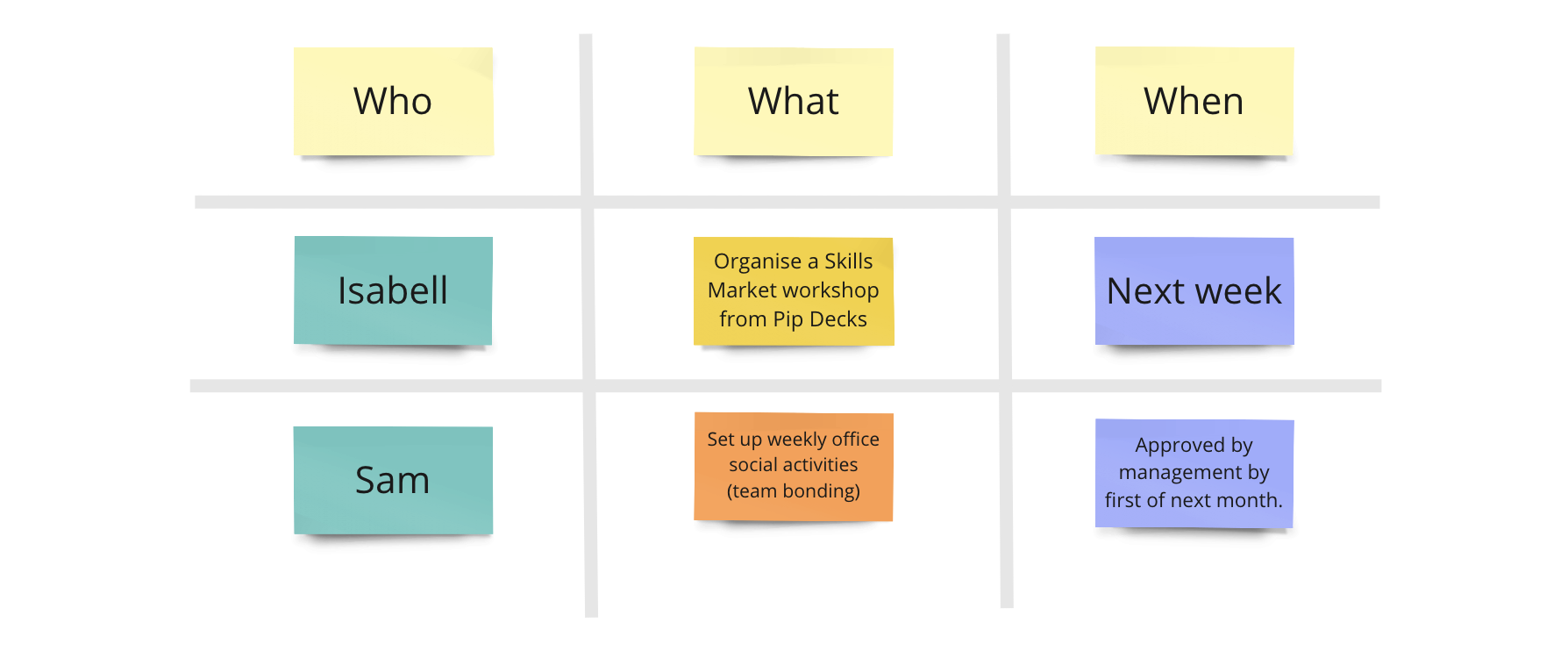
⬇️ In the next tactic, using what you learned about your team’s challenges and frame these problems with Reverse Brainstorm.
3
Use Reverse Brainstorm to find a solution to the problem
Use Reverse Brainstorm to find a solution to the problem

👥 Who is needed? Yourself and your team (optional: just you)
⏱️ How long is needed? 45 minutes
🧠 What’s the goal? Understand what skills each team member has so you can work better together.
👀 Why is this important? This tactic allows you to come up with solutions to the worst, most despicable things that could derail your project. This exercise leads to absurd suggestions, which can give you ground-breaking solutions when reversed.
 Tip: try asking people for things that would get you all fired if you really want their most despicable ideas.
Tip: try asking people for things that would get you all fired if you really want their most despicable ideas.
Instructions
- Identify and write down your problem (this can be a “How Might We…” question) on a large surface so it’s clear for everyone to see. (3 minutes)
- Reverse the problem. (2 minutes)
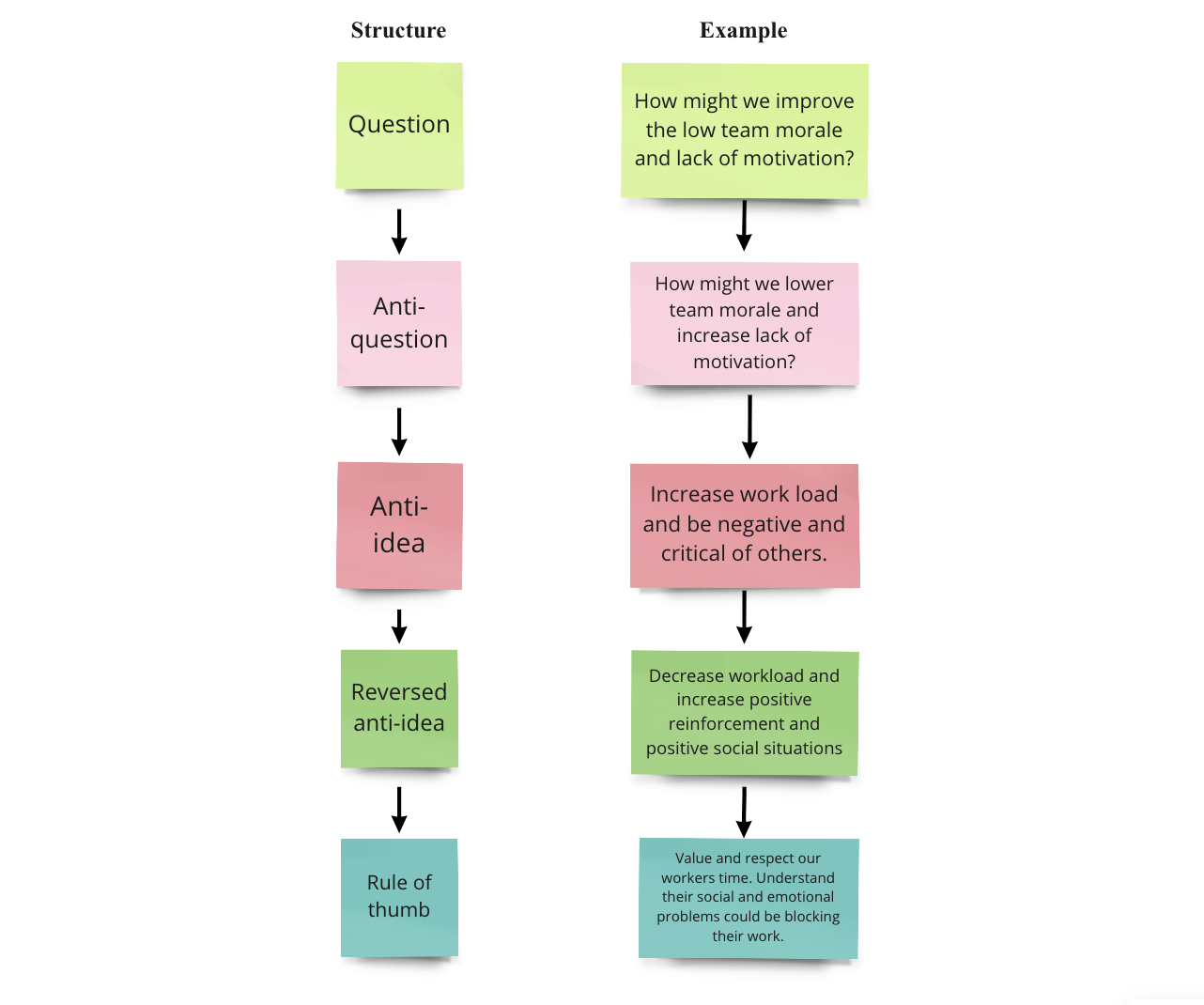
- Run Idea Eight to generate ideas for the anti-problem. (20 minutes)
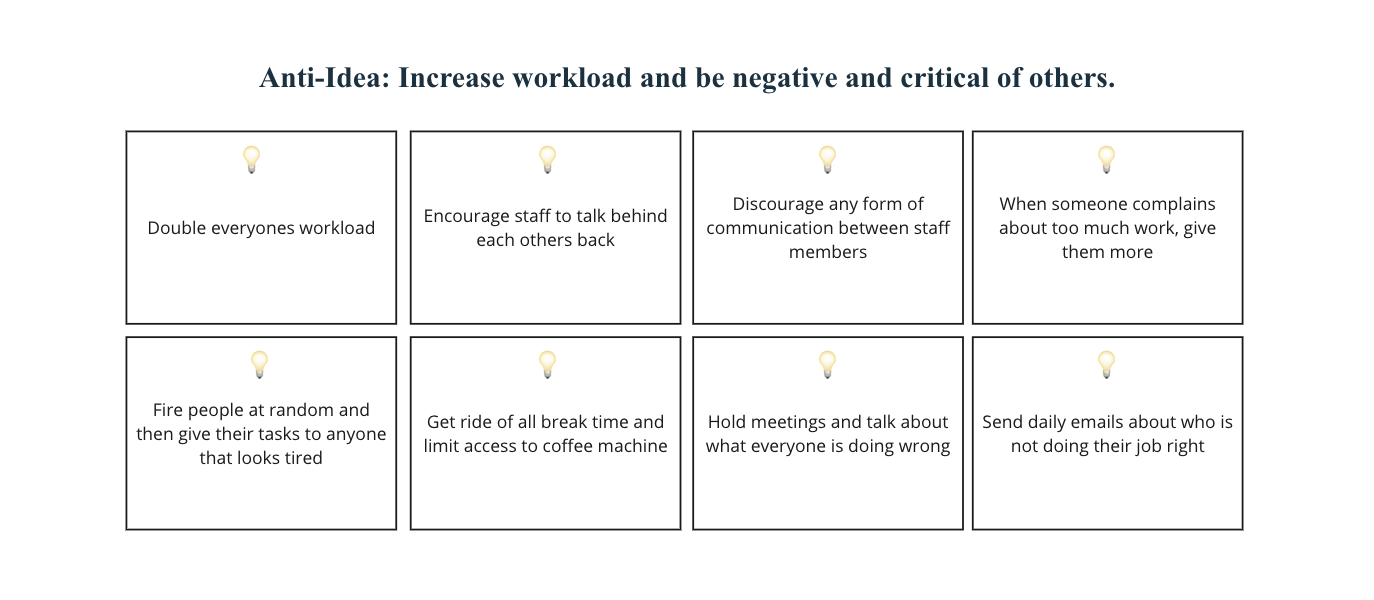
- After sharing the ideas, collect them and randomly distribute the anti-ideas back amongst the group. (2 minutes)
- Ask the group to reverse the ideas they’ve been given. These will now become real solutions for the actual problem. (5 minutes)
-
Do it again to gather even more ideas. (15 minutes)
⬇️ Now that you are done all three tactics, it is time to put your solutions into action.
What ways can I use this recipe?
- Over multiple days: three to five short sessions.
- On one day: two two-hour sessions with a longer break in the middle.
What do I need before I start?
In person
- Prepare (book room, invite people, write and share agenda)
- Materials (whiteboard, sticky notes, pens)
- Tech check (charger, adapter, screen projector)
- Room (refreshments, temperature, chairs, wall space)
Hybrid
- Prepare (book room, send call link, invite people, write and share agenda)
- Materials (whiteboard, sticky notes, pens, Miro board)
- Tech check (charger, adapter, screen projector)
- Room (refreshments, temperature, chairs, wall space)
Online
- Prepare (invite people, write and share agenda, create and send call invite)
- Materials (Miro board)
- Tech check (charger, adapter, Microphone/headphones)
Extra reading
- Read about your role as a Facilitator
- Prepare an Icebreakers
- Invite the right Stakeholders
What next?
Congratulations you have completed Get Unstuck! You have now critically assessed what’s going wrong and figured out what your options are to get unstuck.
Now that you’ve agreed on a viable solution, don’t forget to lead a Retrospective after your project is complete.

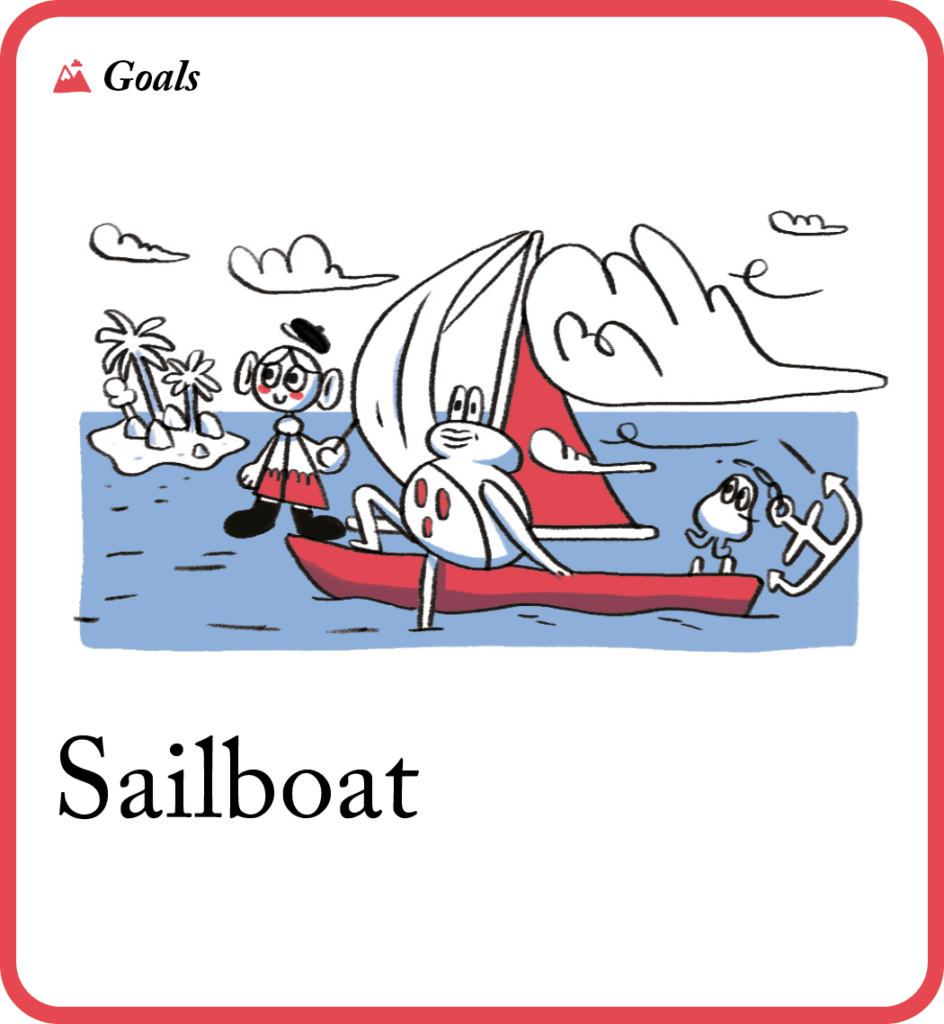
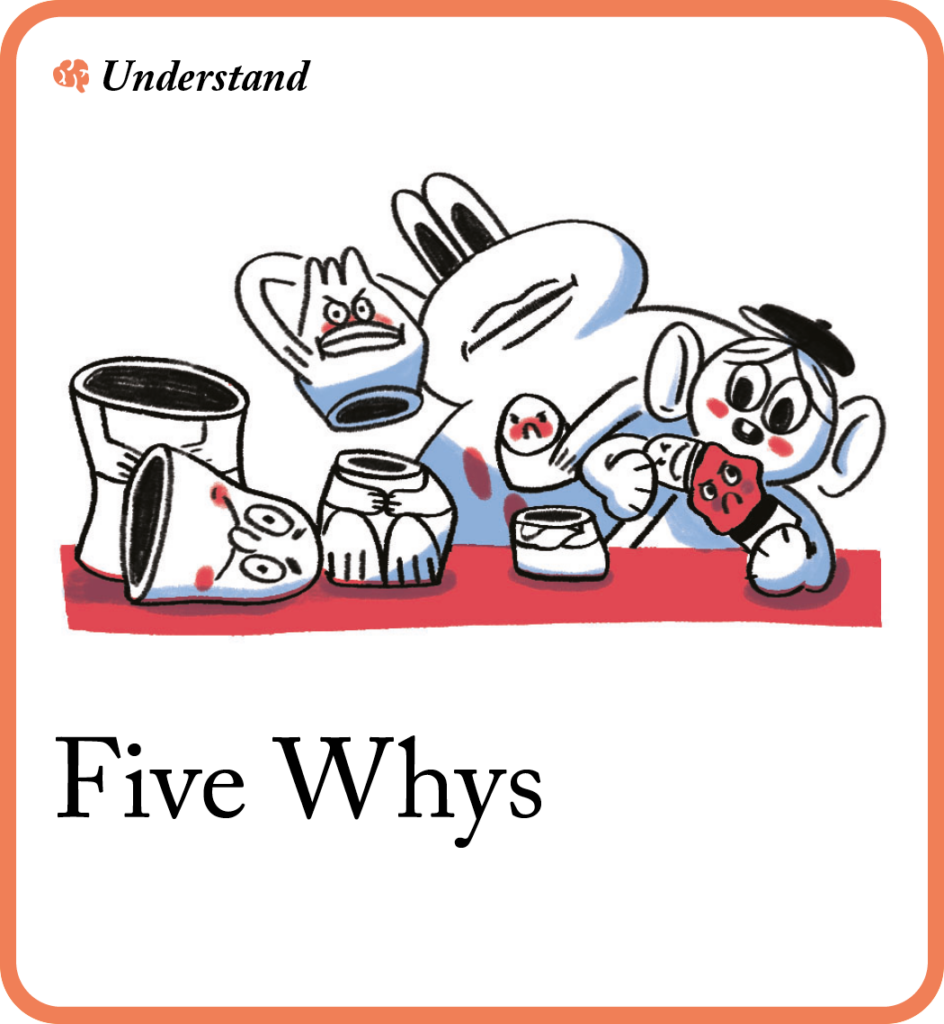
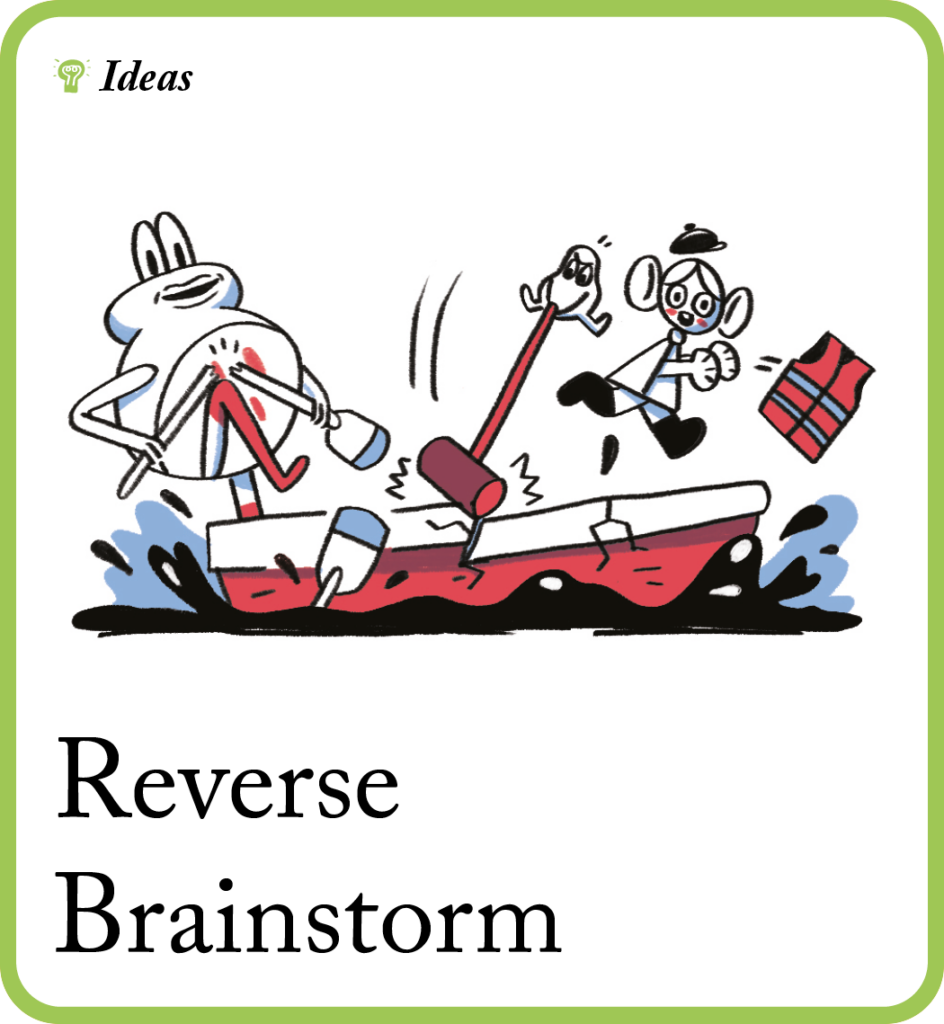
These guides are invaluable! I am facilitating a workshop next week and I am so glad I found these resources. Thank you!
I thoroughly enjoyed the consistency in how interactive and animated (there wasn’t a dull moment) in the entire process. It’s also needs little or no addition to make it fit the peculiarities of the corporate environment in Nigeria. Truly appreciative of you. Thanks very much.
Thank you for being generous Charles, I think your strategy worked, and I will be buying them!